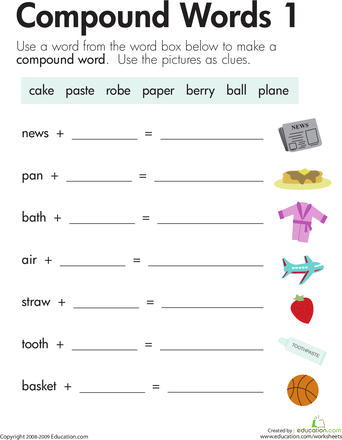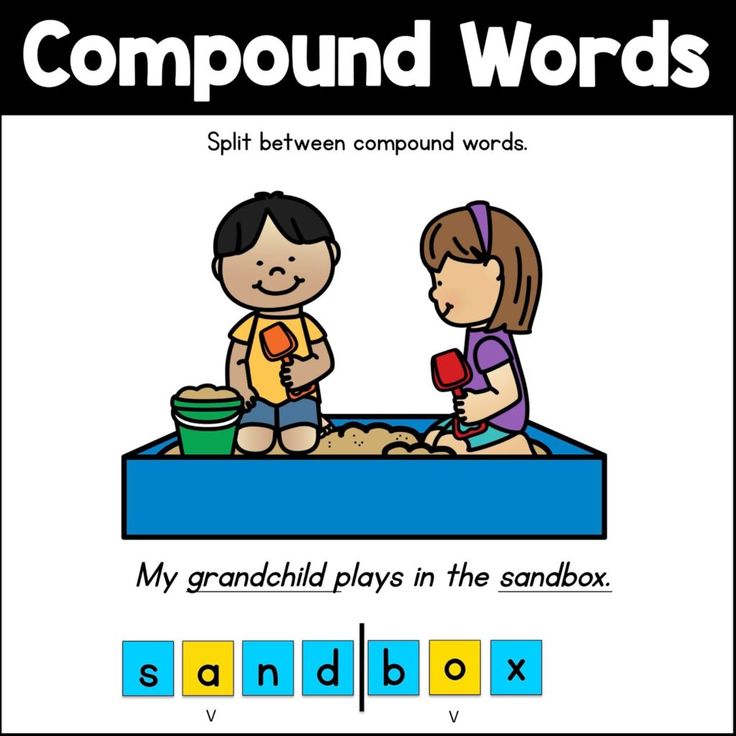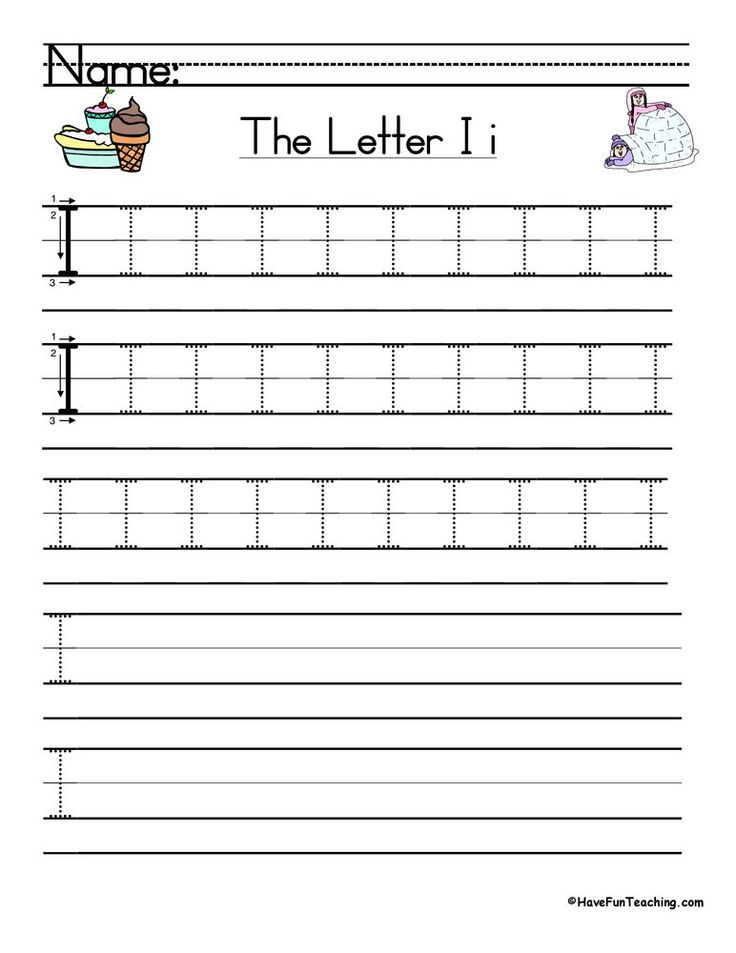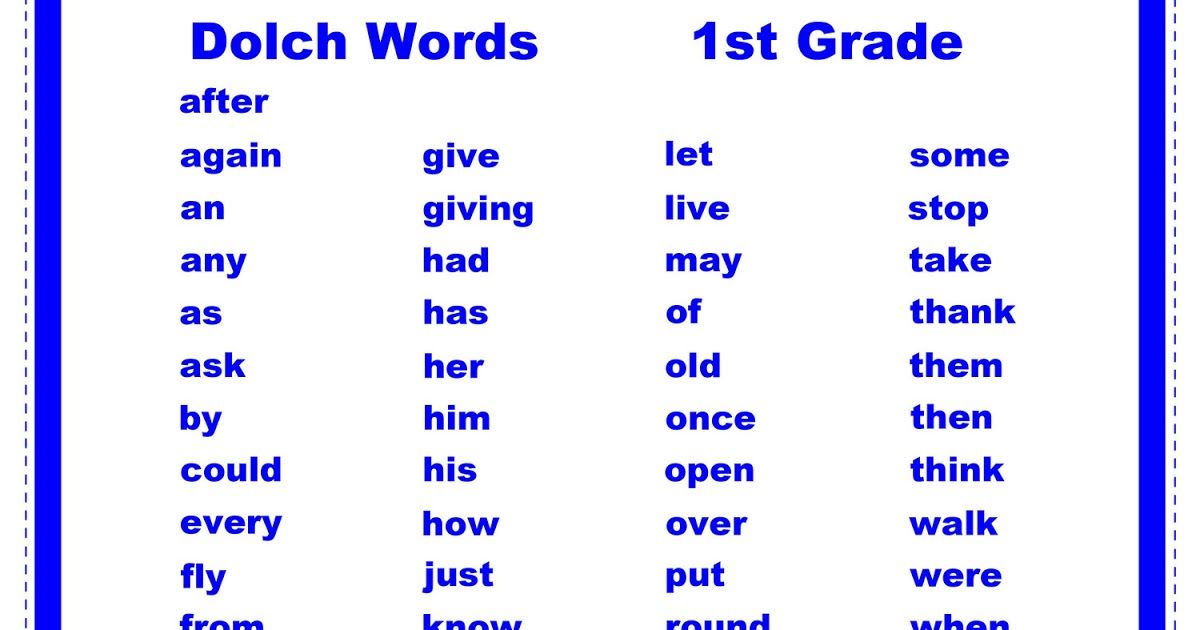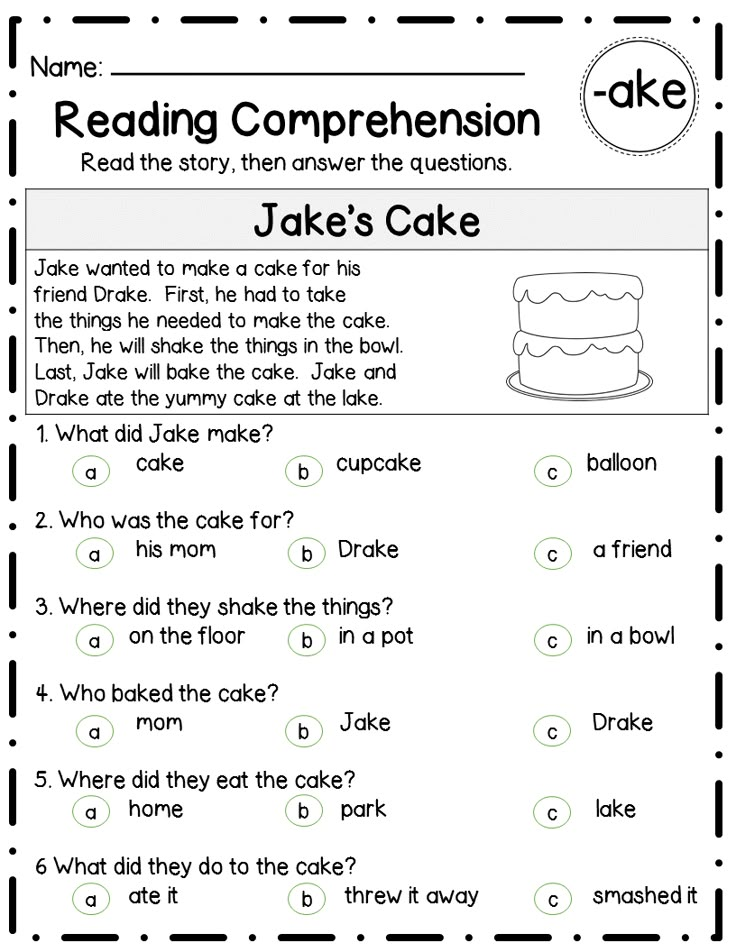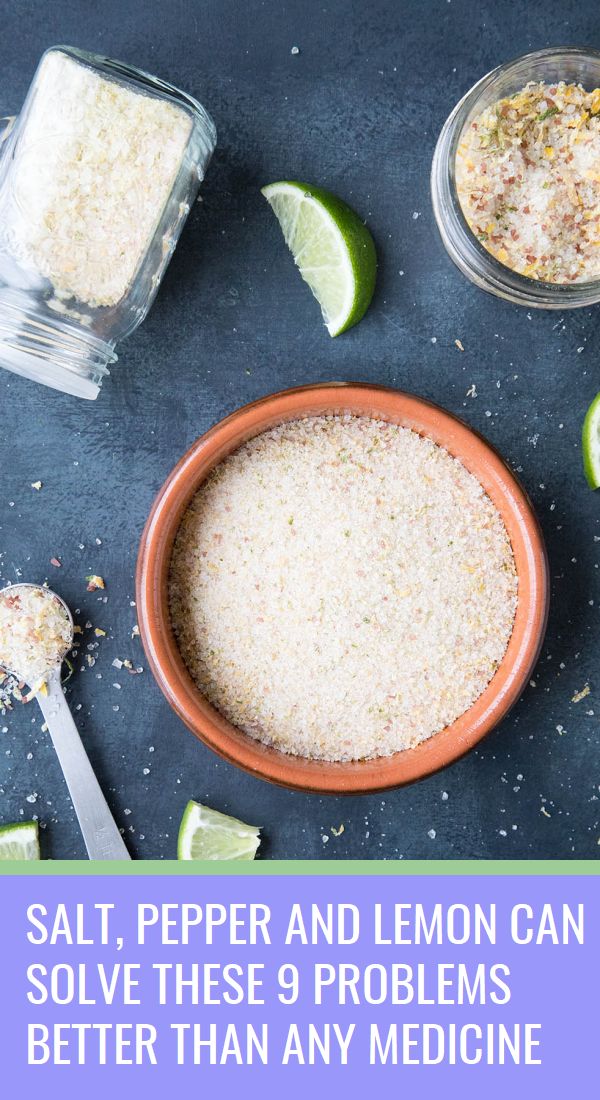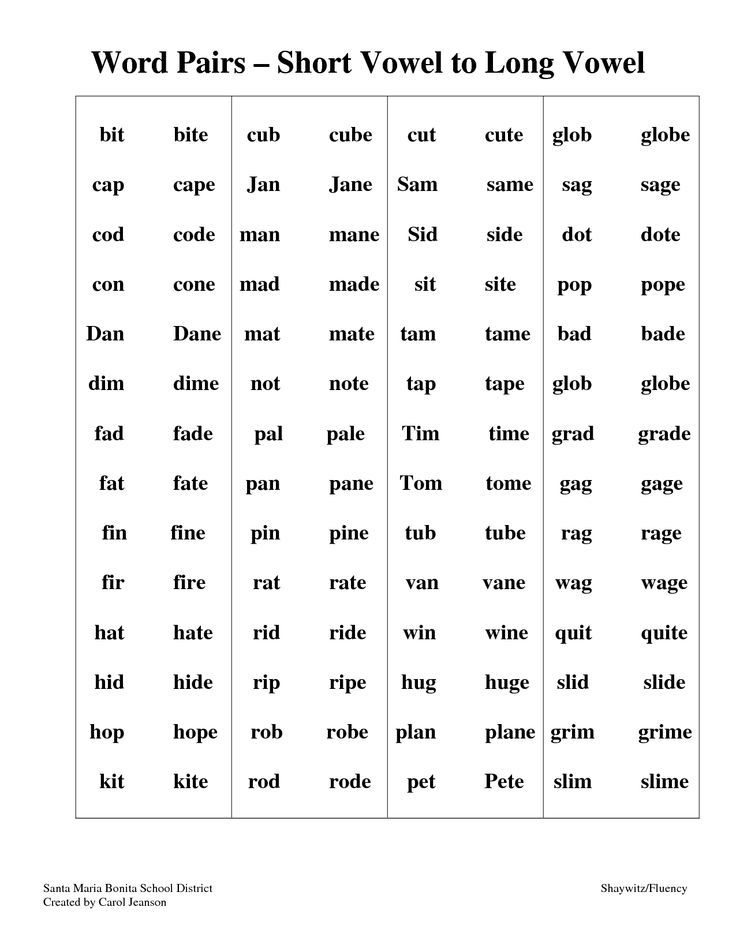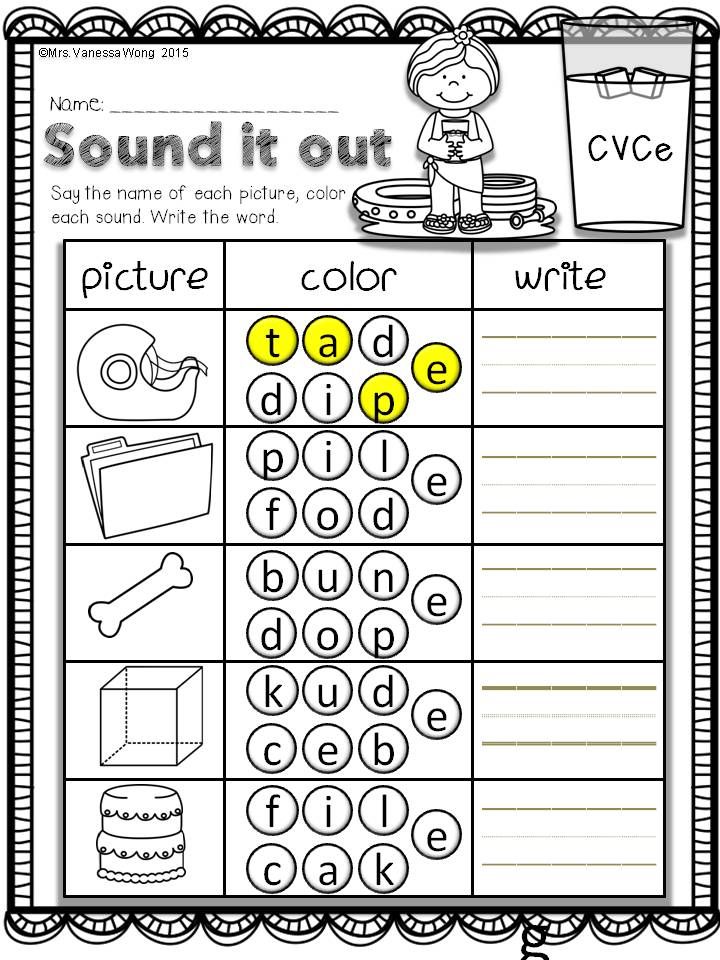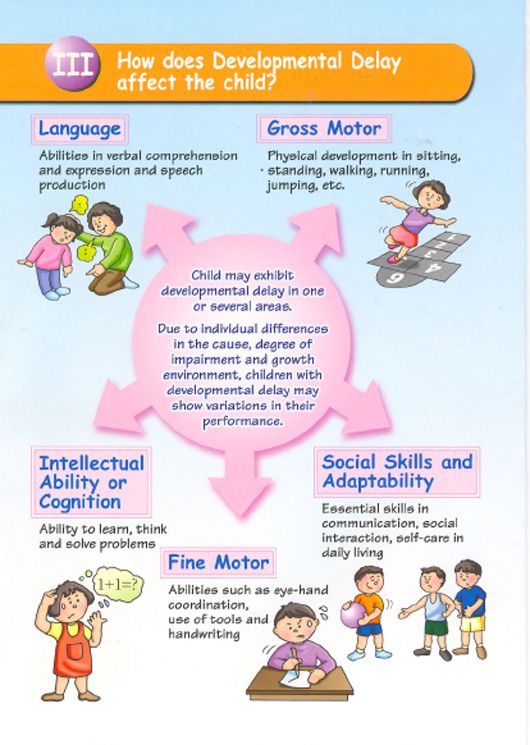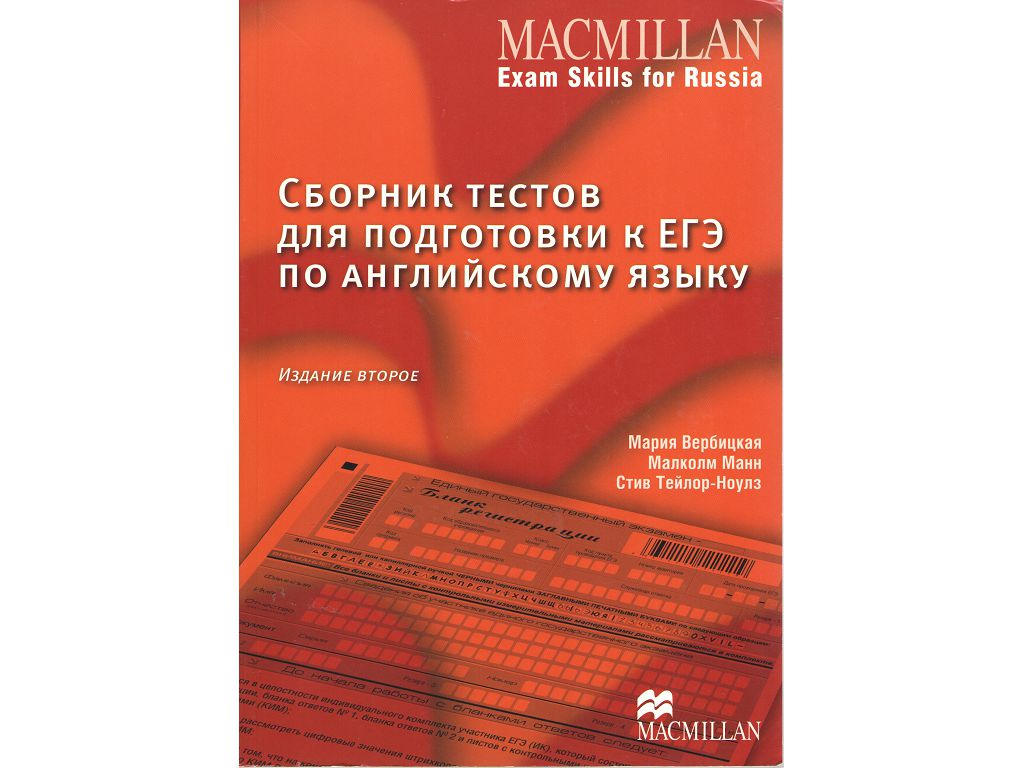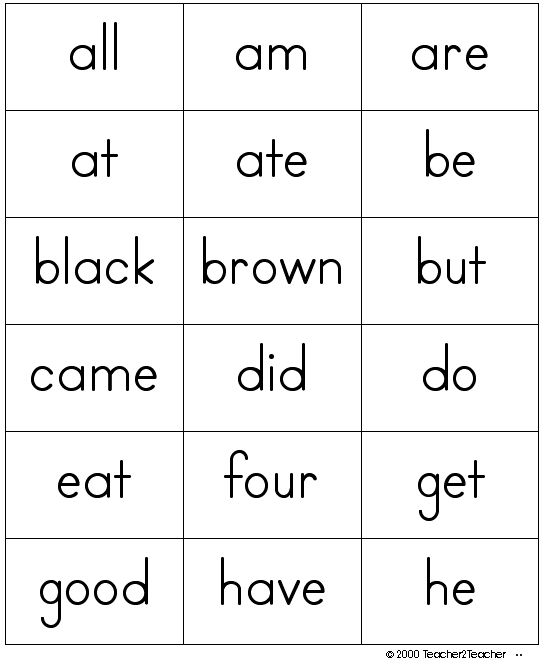Compound word lessons
The 8 Best Compound Word Activities You Need to Try
What do meatballs, butterflies, and cowboys have in common? Not much unless you are teaching compound words to your students this week. This topic can be so fun to teach because of the many different ways you can approach it. Whenever possible, I try to make sure all types of learners’ needs can be met through teaching and activities. I put together a list of some of my favorite compound word activities.
Some of these activities are perfect to use in morning work or literacy stations after students know how to do them. Introduce them during whole group time and then let students keep practicing. These compound word activities were always a hit in my classroom. Most importantly, they helped my students really learn and understand this concept.
Before I jump into the list, I want to share the Compound Words Activities unit. It has everything you’ll need to be totally set for the week teaching compound words. It has a fun character and chant to help you introduce compound words. This unit also has a pocket book, flip book, and picture puzzles. It makes teaching compound words a breeze!
Amazon Affiliate links are used below at no cost to you.
1. Use a song to help you introduce or review compound words.
I love a fun song and video to either kick-off a new concept or to review as we learn. Dr. Jean’s Compound Boogie song is catchy and has great coordinating pictures. It has plenty of examples so your students will really get the hang of it. View it HERE.
2. Create an anchor chart for students to refer to.
A good anchor chart helps make learning visible and accessible to students. It serves a visual reference for students to look to. I love to make one with the definition of a compound word and a few examples. Then, as the week goes on, we’ll take a minute or two each day and add more examples as students come up with them.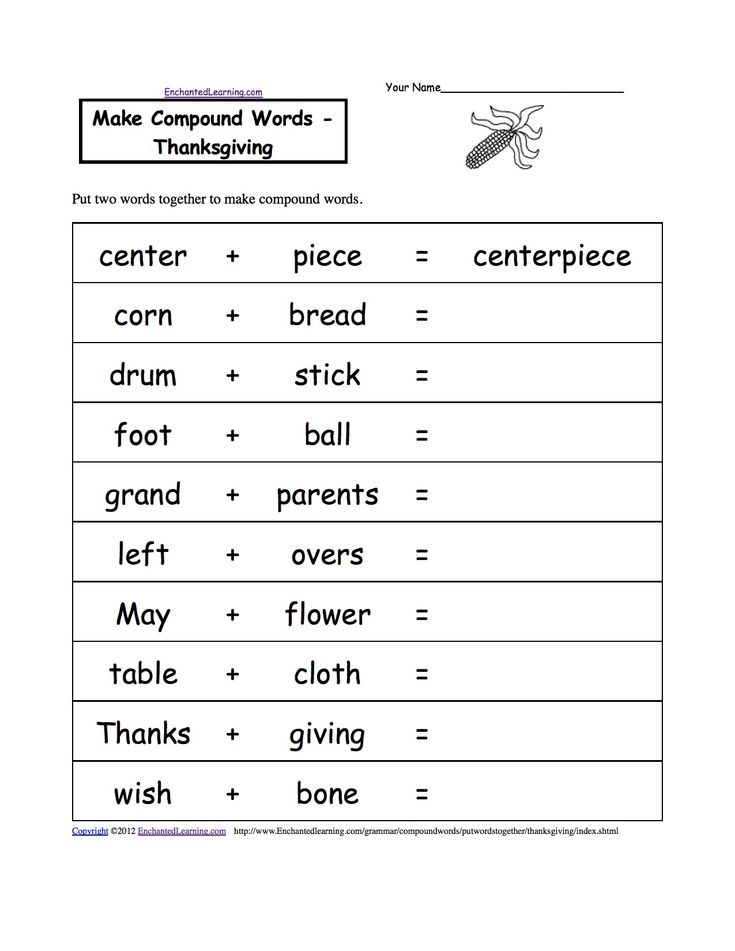
Another fun anchor chart to make is compound words that are food. There are so many! I did this as interactive writing. My students loved adding to this chart!
3. Use read alouds for students to practice listening for compound words.
Read alouds are powerful tools that can help reach auditory learners, build background knowledge, and help grow strategic readers. Read alouds also help you integrate topics, like compound words, throughout the day. While you read, have students listen for compound words. You can have them raise their hands when they hear one. Here are a few books to use for compound words:
- Cloudy with a Chance of Meatballs by Judi Barrett
- If You Were a Compound Word by Trisha Speed Shaskan
- Thumbtacks, Earwax, Lipstick, Dipstick: What Is a Compound Word? By Brian P. Cleary
- Once There Was a Bull…Frog by Rick Walton
4. Use Duplo blocks for hands-on practice.
Write words on the blocks by using my favorite Post-It tape on shorter Duplo blocks.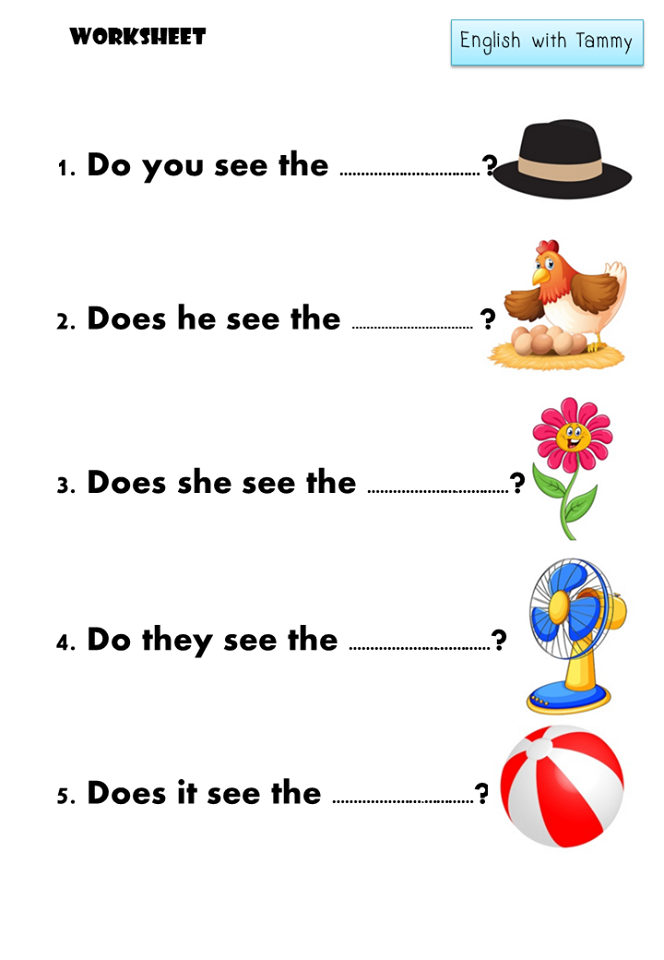 Have students place two short Duplo blocks together on a longer one to make a compound word. If you have very low-level readers, you can simply add pictures. You can have students write the new compound word they created and illustrate it if you want something you can check afterward.
Have students place two short Duplo blocks together on a longer one to make a compound word. If you have very low-level readers, you can simply add pictures. You can have students write the new compound word they created and illustrate it if you want something you can check afterward.
5. Implement self-checking puzzles.
Puzzles are such a great way for students to use their hands and brains while learning. Self-checking puzzles help students immediately see if their thinking is correct or not. Just write a word and draw a simple picture on each side of a notecard. For example, tree and house. Make a unique cut, like a zig-zag, and cut the notecard in half. Create several of these and mix them up.
In my Compound Word Activities Unit, I have this activity already done for you. Plus, there’s a recording page to make it easy for students to jot down their matches and for you to check them.
6. Introduce hands-on games to reinforce learning.

Most students in kindergarten, first grade, and second grade know how to play memory. Add a twist to the classic game with compound words. After you introduce this and model how to play, let students practice. Then, you can use it during morning work or in a word work or game literacy station.
- Make picture word cards for the compound word and its two individual words. For example, treehouse, tree, and house.
- Do this for several compound words.
- Next, flip the cards facedown.
- Students take turns flipping over three cards, saying/reading each one.
- Finally, if they flip over the three cards that go together (tree, house, and treehouse), they get to keep them and get a point.
7. Use online games.
There are several games online that you could use to let students practice identifying and making compound words. If you have iPads, you could use them in literacy stations. Check out what I found on YouTube.
- The Guess the Word Challenge is a video that shows two pictures.
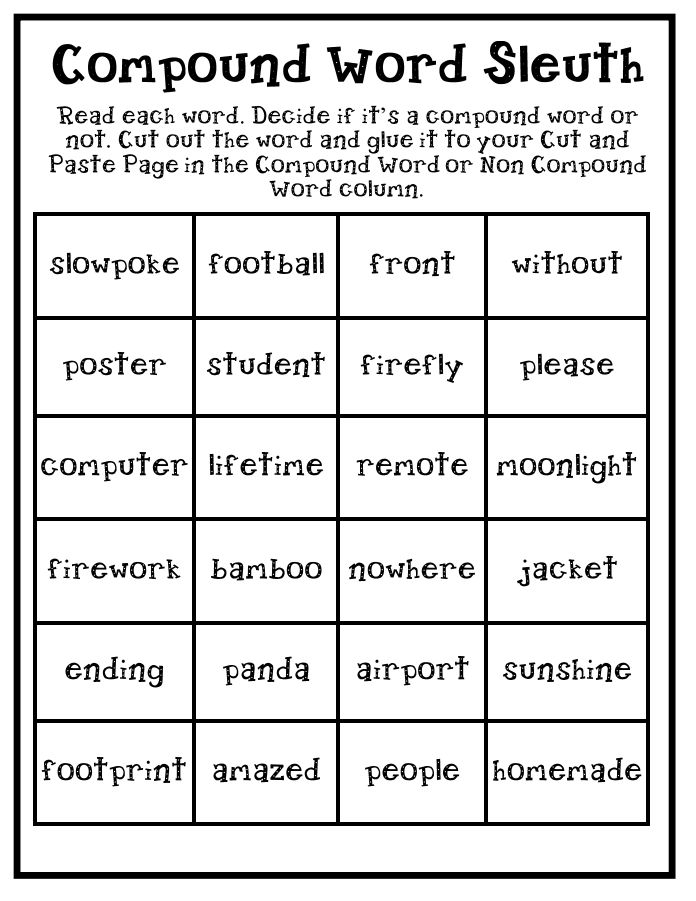 Students have to guess the compound word before the clock countdown ends.
Students have to guess the compound word before the clock countdown ends. - Similarly, The Compound Word Game is very similar. The main difference is this game does have some audio of someone saying the name of each picture, and the other game has no audio.
You can have students play two ways:
- Think, pair, and share the answer. Give a thumbs up or down if their partner got it correct.
- Let students write or draw the answers on whiteboards and hold them up to show you.
8. Sort compound words and not compound words.
Sorting is one of the higher-level compound word activities on Bloom’s Taxonomy. Show some examples of compound words with pictures and words that are not compound words. Have students sort them.
If you want this activity already all planned and done for you, my Compound Word Activities has this activity in it. Students make a pocket book and sort the pictures. I love sorting this way because it’s interactive, and the students can take the pieces out, mix them up, and sort them again.
I love sorting this way because it’s interactive, and the students can take the pieces out, mix them up, and sort them again.
These eight compound word activities will be sure that the different types of students’ learning needs are met and support your ELL students, too. Remember that with any concept you teach, it’s important to add variety to your lessons and activities. As a result, students will be engaged and learn more effectively.
pin it
Do you have any must-do compound word activities? Leave a comment and let me know!
Shop This Post
Compound Word Activities Unit : This unit has interactive activities to help you teach compound words and help your students master this standard. It includes:
- Fun Compound Word Chant
- Compound Connection Puzzles (18 picture puzzles and recording sheets)
- Compound Connie (character used to help introduce the concept with activities)
- Pocket Book for Compound Word Sort
- Compound Flip Book (creating compound words)
Want to use the latest research to boost your readers during small groups? This FREE guide is packed with engaging ideas to help them grow!
The Essential Guide (+ FREE Downloads)
by Marie Rippel
Compound words are formed when two smaller words combine to form a new word, as in these examples:
mail + box = mailbox
milk + shake = milkshake
note + book = notebook
The resources in this article can help you introduce compound words to your children and make them feel like superheroes for being able to read and spell such long words!
What Is a Compound Word?
Compound words can be lots of fun for young readers and spellers. And they are easier to tackle if we think of compound words as two smaller words that are combined to form a new word.
And they are easier to tackle if we think of compound words as two smaller words that are combined to form a new word.
But there’s another important thing to consider when teaching compound words!
When deciding of a word is a compound, remember that the meaning of the compound word relates to the meanings of the two words that combine to form it. For example, a bathtub is a tub you take a bath in. A sandbox is a box you put sand in. An anthill is a hill made by ants, and so on.
Download This Free List of Compound Words
This big list of kid-friendly compound words will be a great resource as you work on this skill together.
Teach How to Look for the Two Smaller Words in the Compound Word
The easiest way to introduce compound words is with letter tiles. Choose a word such as bathtub from the resource list and build it with the tiles.
Explain to your child that the word bathtub has two smaller words in it, and invite him to find those two smaller words.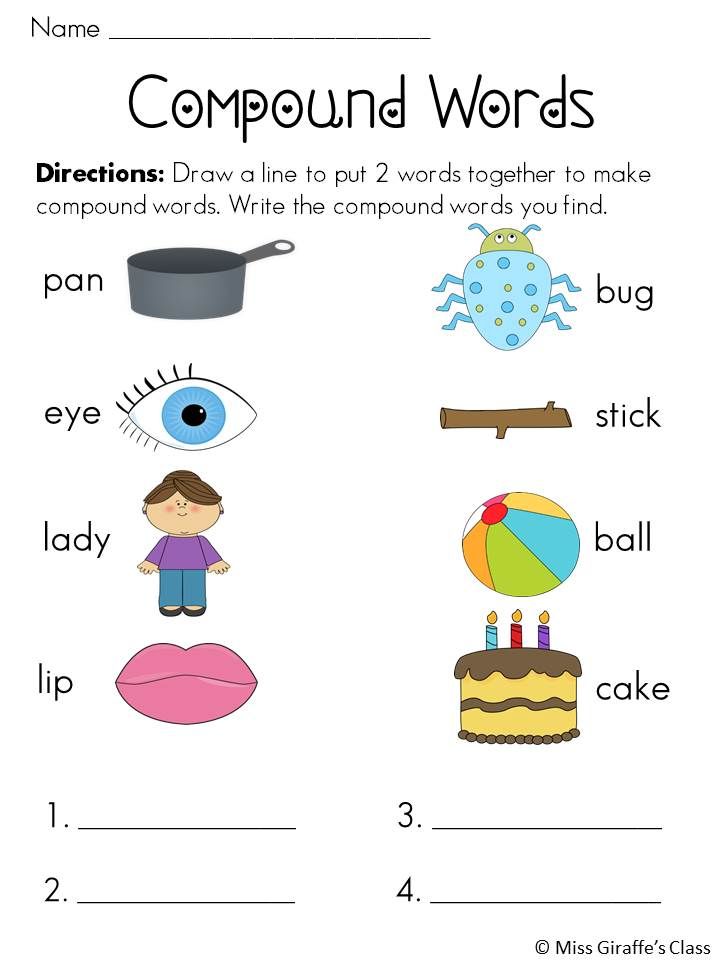 Letter tiles are great for this activity because your child can separate the compound word into two words, like this:
Letter tiles are great for this activity because your child can separate the compound word into two words, like this:
Suddenly, longer words are no longer scary! See why I love letter tiles so much? You can practice this concept with fun words like sandbox, anthill, backpack, and windmill. This is a wonderful method for helping students visualize the words that form compound words.
Games and Activity Sheets for Compound Words
Hands-on games and activities make learning about compound words more fun! Here are three free printables that you can use with your child. The first two activities come from All About Reading Level 1, and the third activity was designed for all reading levels.
“Bird Friends” Activity
Birds of a feather flock together … and in this fun reading activity, birds of a feather make compound words, too! Just have your child select two matching birds and place them side by side on the branch. Each pair of birds makes a compound word!
“Chop-Chop” Activity
Practice compound words with this fun (and safe!) chopping game! Just cut out the knife and the foods, then let your child “chop” each compound word between its two smaller words.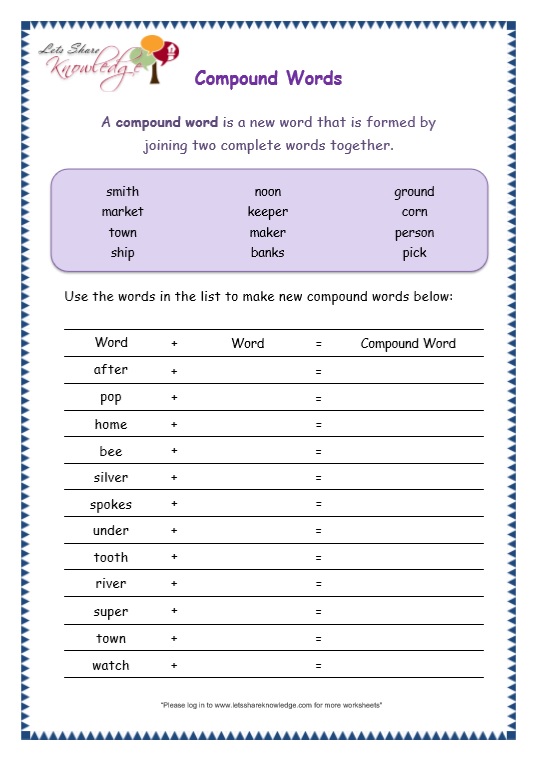 Read each smaller word, and then read the compound word.
Read each smaller word, and then read the compound word.
“Banana Splits” Game
Use compound words to build the yummiest banana split ever in this delicious multi-level reading game. Every player gets an ice cream bowl and a stack of candy covered scoops of ice cream to play with. And the best part? Students of different levels can play together!
Spelling Tips for Compound Words
When your child is spelling, it may not be obvious when to combine two words into one. This process is made more difficult by the fact that there are actually three kinds of compound words. There are closed compounds, which we have been discussing in this article so far. And then there are open compounds and hyphenated compounds.
If your child needs to spell the word ice cream, for example, there is no rule that will help her decide whether this is a closed or open compound word. She’ll just need to determine what “looks right,” and the only way to do that is to have seen it in writing before (preferably multiple times).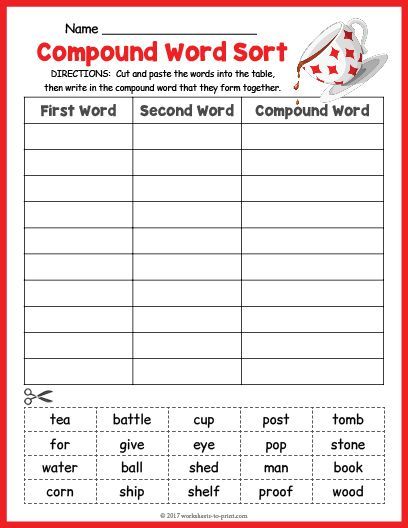 The Practice Sheets in All About Reading and the Word Banks in All About Spelling are excellent tools to do just that.
The Practice Sheets in All About Reading and the Word Banks in All About Spelling are excellent tools to do just that.
Of course, reading word lists isn’t all that exciting. Reading a short story about a sassy cat, on the other hand, is a much more engaging way to practice reading compound words! Here’s the first story with compound words that beginning readers encounter in All About Reading Level 1.
Cobweb the Cat short storyIn this story, young readers encounter fourteen different closed compound words, including bathtub, catfish, and sunset. All of these words are pre-taught through various activities, so even before reading the story, the child has already become familiar with them.
The more times your student sees compound words in print, the easier it will be for him to spell them. And that leads us to our final tip for teaching children to spell compound words…
Provide Oral “Hints” During Spelling Dictation
To increase your child’s awareness of compound words during spelling dictation, provide prompts such as “This next sentence has a compound word.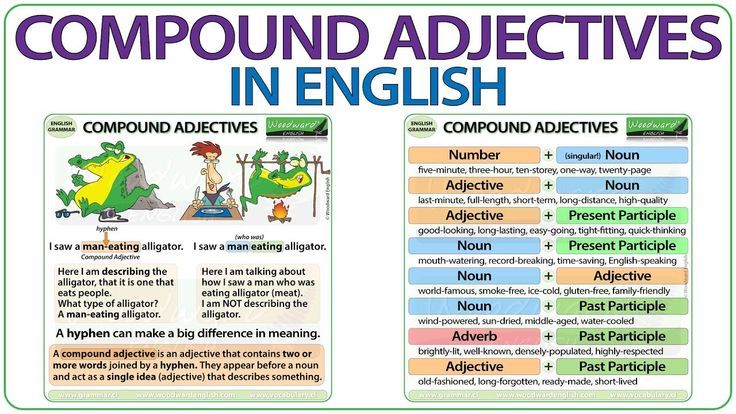 ” After your child sees closed compound words in print a number of times, he’ll begin to get a sense of when to combine two smaller words into one.
” After your child sees closed compound words in print a number of times, he’ll begin to get a sense of when to combine two smaller words into one.
The bottom line when teaching compound words is practice, practice, practice! But make practice a joy by incorporating letter tiles, activity sheets, short reading selections, and spelling dictation “hints.”
What are your favorite ways to practice compound words? Let me know in the comments below!
Russian lesson on the topic "Compound words". (grade 3)
Russian language lesson
(EMC "School of Russia" grade 3)
9004 lesson 9030
false words.
Lesson type : learning new material.
Lesson objectives :
introduce students to complex words, give the concept of "complex word", teach to find complex words, identify roots in them,
develop skills classify, analyze, draw conclusions, develop students' speech and spelling vigilance,
on the material of the lesson develop interest in the language, the word.
Planned results.
words, be able to use the connecting vowels o and e.
Meta-subject:
cognitive reasoning, to highlight essential information from the text;
regulatory - accept and save the learning task, plan their actions, adequately perceive the assessment;
communicative - ask questions, engage in dialogue and working together, developing the ability to work in pairs.
Personal: speak your mind, be patient and goodwill in the discussion, trust in the interlocutor, motivate their actions, reckon with the opinion of another person, the development of motives for educational activities, skills of cooperation with peers.
054
Organizational moment.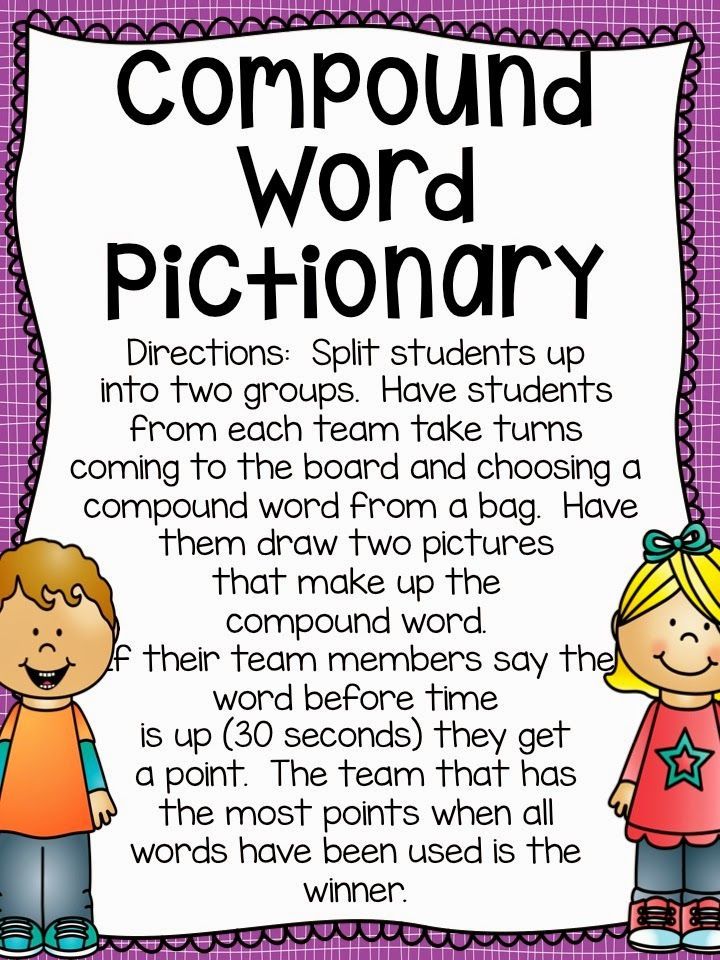
Here the call gave us a signal:
He called us,
And we do not lose
and our lesson begins.
- Russian language lesson. The lesson is interesting and brings joy when we we think, we work together. Today we will work with words, analyze, compare, reason, seek solutions.
- I want to wish you good luck and active work in the lesson.
- Today we will continue to reveal the secrets of the Russian language.
Tell the secrets of the word
I am always ready for you.
But be ready in class
Uncover the secrets of words yourself.
II . A moment of cleansing.
- Let's start the lesson with a minute of calligraphy.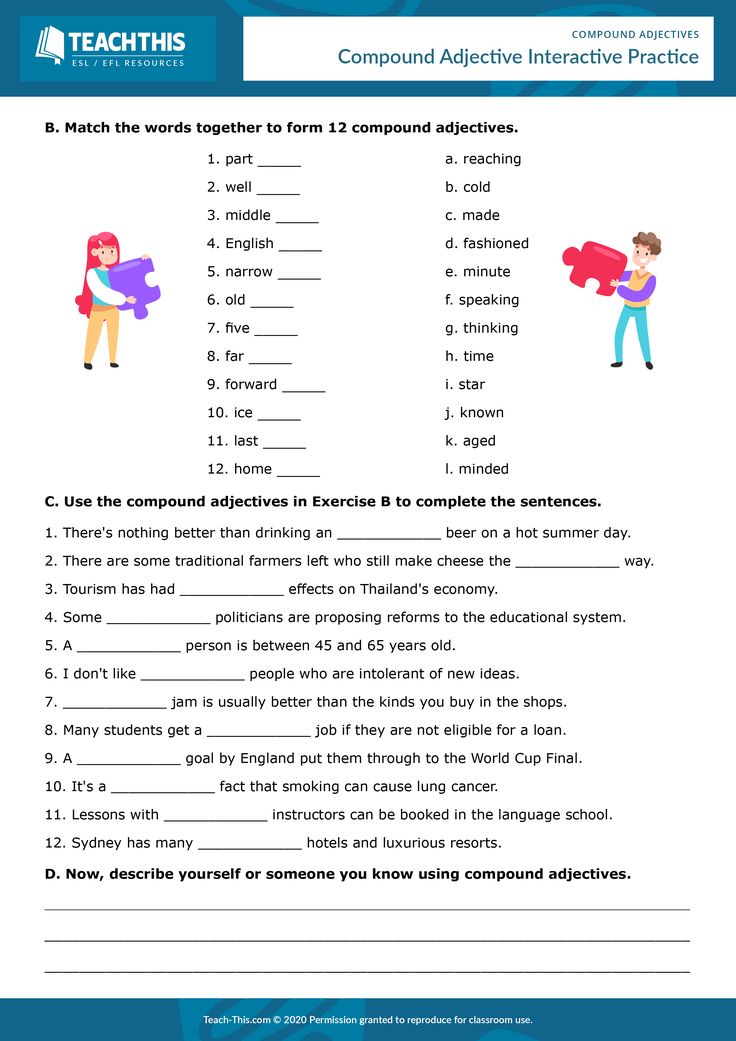 Opened notebooks, wrote down the number - 11th of November.
Opened notebooks, wrote down the number - 11th of November.
( At this time, 3 students work on individual cards.)
- Assistants will help me to reveal secrets - Russian letters alphabet. To guess them, you need to remember which letter in the alphabet goes under the number 16 and under No. 6.
- Our letters - helpers - are the letters "o" and "e". Why they? Later find out.
- Let's write down these letters.
- Next, write these letters in the following pattern:
both ove oge ....
- Who knows how to continue it?
- The letters "o" and "e" alternate with consonants going in alphabetical okay.
ode auger ose okeole
III . Vocabulary work.
- These letters are often unstressed in dictionary words that we Now let's remember and write.
- So, vocabulary work. Write down the words, mark the stress, emphasize the unstressed vowel.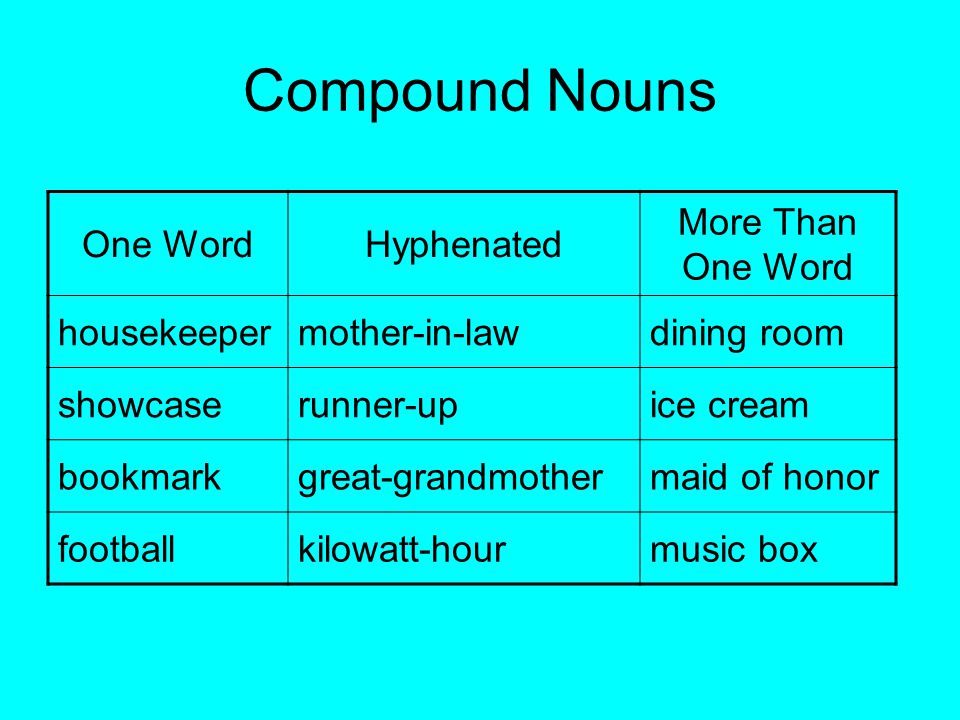
(The teacher dictates words.)
Peas, oats, frost, wheat, nuts, weather, east, parsley, capital.
(Self test by key)
Slide 1
- Evaluate 2 more students at this time.
- Rate yourself. No errors - 5, 1-2 osh. – 4, 3 osh. – 3.
- Who did it without mistakes? Who made 1-2 mistakes?
- Collect individual cards. Check, evaluate.
IV .Updating of basic knowledge.
- And now let's remember what we learned in the previous lessons.
- For the word "leaf" we will select and write down words with the same root.
(One student is at the blackboard.)
Leaf - leaf, leaf, leaf, leaf fall.
- AS what are the words you wrote down called? (one-root)
- What words are called one-root?
(Words that have the same root and are close in meaning)
- What is the root of a word?
(The root of the word is the main significant part of the word.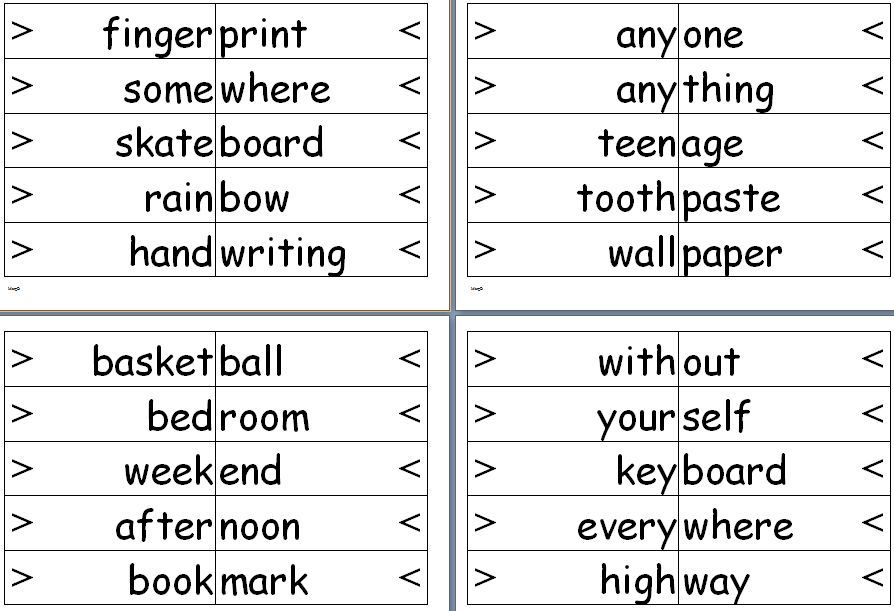 In root contains the common lexical meaning of all cognate words.)
In root contains the common lexical meaning of all cognate words.)
- Highlight the root in words.
- Which word has difficulty? (leaf fall)
- What question arises?
- How many roots are there in a word?
- To answer this question, let's conduct a study. What does the word mean "leaf fall"?
(This is when the leaves fall)
- How many roots will there be in a word? Highlight them.
- What is the peculiarity of this word?
(This word has two roots)
V . Presentation of the topic and objectives of the lesson.
- Such words have their own name. Try giving them a name. Maybe someone already knows what are their names?
(Two-root, compound, complex.)
- Check our assumptions.
(Compound words.)
- A board appears on the board with the name of the topic.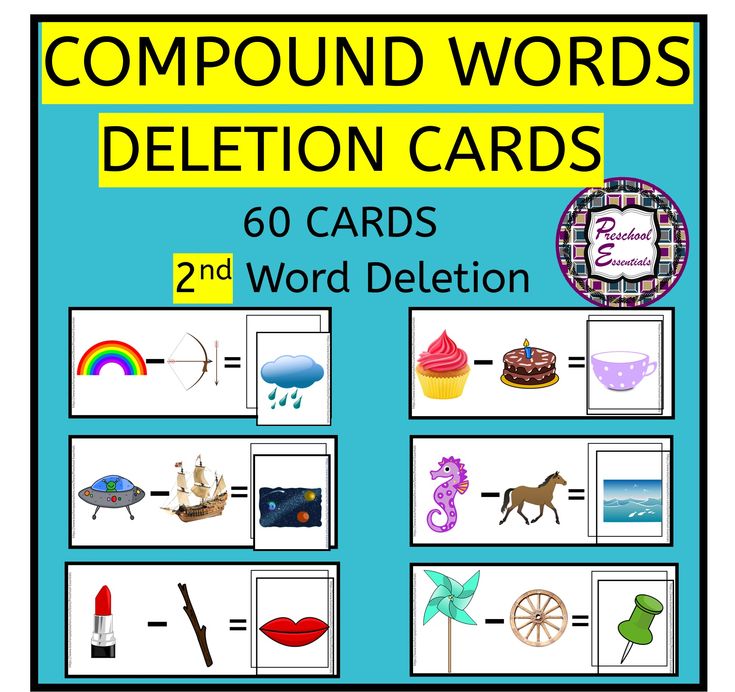
- Thread our lesson "Complex words".
- Formulate the objectives of our lesson using the beginning of sentences.
(plate on board)
We will learn ... (which words are called compound).
We will get to know each other… (how such words are spelled).
We will study ... (find complex words, make them up)
VI . Learning new material.
1) Observation of compound words.
- Now let's make an observation on compound words that will help we have to formulate a rule.
- Guess the riddles and write down the riddles, explain the lexical meaning words, highlight the root in the words.
(One student works at the blackboard)
B flies through the blue sky,
Overtaking birds flight.
Man manages them.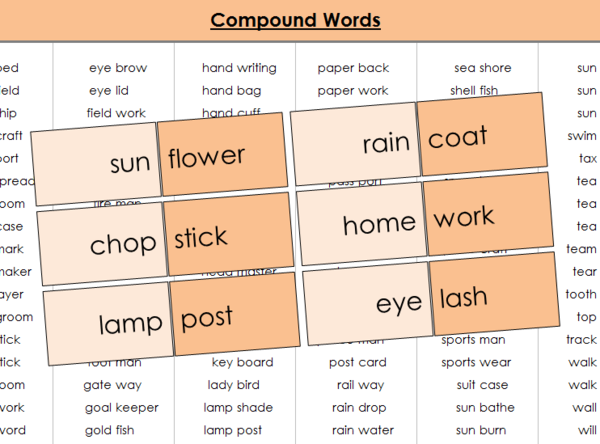
What like this?
(Airplane) (Why was it called that?)
Yes we have a robot in our apartment,
he has a huge trunk.
Likes robot clean
and buzzes like a TU liner.
(Vacuum cleaner) (Why was it called that?)
C the mountain runs a swift stream,
Fast water falls.
Beauty see this one -
Not you will never forget.
(Waterfall) (Why is it called that?)
Eat I am coal, I drink water,
How I'll get drunk - I'll speed up.
I am carrying a convoy one hundred wheels
I I am called …
(Steam locomotive) ( Why did it be called so?)
Despite the bad weather,
makes passages through ice.
Cuts them like butter with a knife.
What is the name of the ship? ( Icebreaker ) ( Why was he called that?)
- How many roots are there in these words? ( 2 )
- What was added to connect the roots of words?
(They took the vowels "o" and "e")
- How can these vowels be called? Why?
(Coupling)
- What is their role? (Connect Roots words)
- Here they are our letters - helpers, remember the beginning of the lesson.
2) Rule formulation.
- And now let's generalize everything and try to formulate a rule that not in the textbook.
- We will work in pairs. Take a card on the desk, read, discuss, fill in the missing words.
- Who can read what you got.
- Test yourself.
Slide 2
o or e are called compound words.
- Learning the rule, telling in pairs and aloud.
- Why are such words called compound?
(Because they were formed from the addition of roots.)
If in the root word 2 these are compound words.
Fizminutka
Now stand up guys!
Hands up quickly,
To the sides, forward, backward,
Turned to the right, to the left,
Quietly sat down, again to work.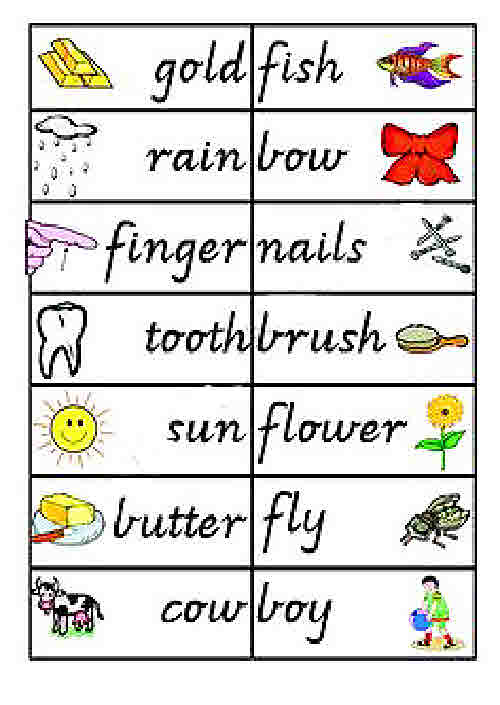
VII . Consolidation of the studied material.
- And now we will practice writing complex words.
- Exercise 138, p.77. Write off the words, highlight the roots. Emphasize connecting vowels. The task will be carried out according to the options.
( I - 1 column, II - 2 column.)
- Mutual check. Exchange notebooks and check your neighbor's work.
- Check by slide.
Slide 3
- Who completed the task correctly?
- I need to check the work of 2 students. Add. Question. Estimate.
2) Oral work.
- And now you rest,
But listen carefully.
Since then you will name compound words.
plane flies
I was going to fly with him.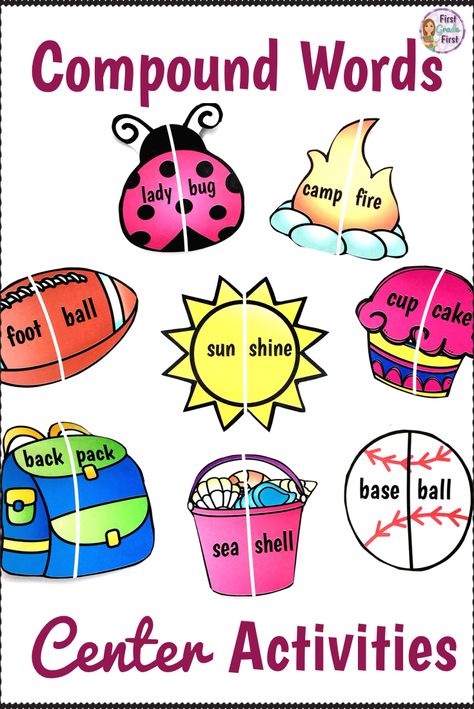
Steamboat sails by,
Let him take me with him.
locomotive is passing by,
If only he could give me a ride.
Here comes a pedestrian,
There is ice on the road .
Be careful pedestrian!
- How many compound words were there? (5 or 6). Name them.
3) Formation of compound words.
- And now let's try to compose complex words ourselves. But at the beginning let's see how the writer Yuri Koval did it.
- Exercise 139. p.78. Read the passage.
- What compound word did the author come up with to describe what he observed?
(snow)
- Is the word well chosen? What does it mean?
- Replace phrases with one compound word.
(Work is done collectively, 1 student - at boards).
Catches fish - ... (fisherman), snow falls - ... (snowfall), a farm where birds are bred - .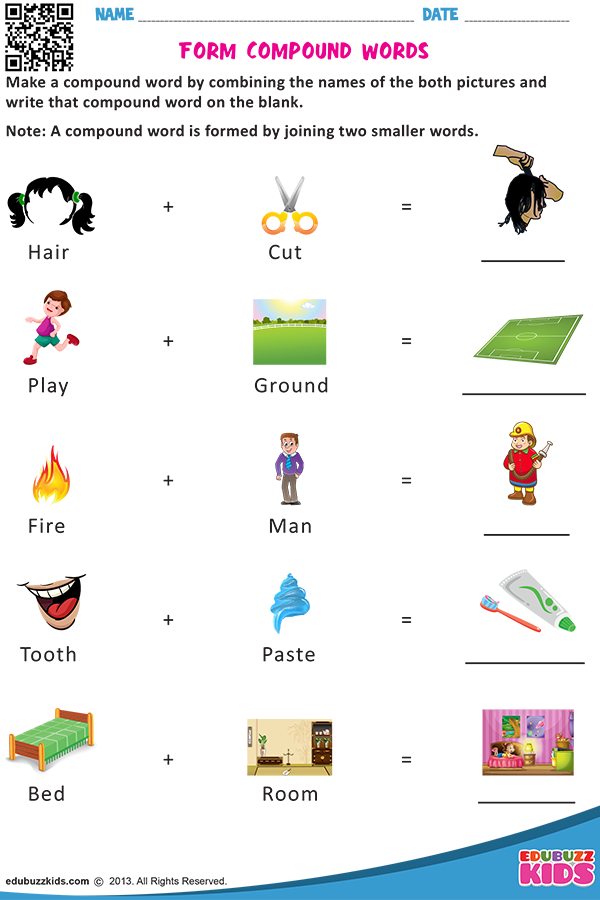 .. (poultry farm), rolls himself - ... (scooter), walks on the Moon - ... (lunar rover), catches birds - ... (bird catchers), walks on foot - ... (pedestrian), breeds bees - ... (beekeeper).
.. (poultry farm), rolls himself - ... (scooter), walks on the Moon - ... (lunar rover), catches birds - ... (bird catchers), walks on foot - ... (pedestrian), breeds bees - ... (beekeeper).
- B words, highlight the roots, underline the connecting vowels.
- What words are called compound? Estimate.
4) The game "Extra Four".
- Exercise 140, p.78 (oral). Read, find in each group of words "superfluous word. Explain your answer.
- Work in pairs.
( Driver - not a related word, not a compound.)
( Arborist - no root "walk".)
( Whirlwind - not related, or wind meter - compound word.)
5) Creative work.
- Compose a short story (4-5 sentences) about autumn, using key words.
Falling leaves, colorful leaves, swirling like helicopters, colorful carpet, pedestrian.
Slide 4
- Listen to 2-3 stories.
V W. Lesson summary.
- What words did we meet today?
- What are compound words? Three students answered the question in the following way.
1. All incomprehensible words are called compound.
2. All long words are compound words.
3. Words with 2 roots are called compound words.
- Which of the guys is right?
- Who can repeat the rule?
- What role do compound words play in our speech?
(They are used for brevity of speech instead of use a sentence or phrase.)
- Do you think we have learned everything about compound words?
- Some surnames, city names, professions. There are also compound words without a connecting vowel. As well as words consisting not of 2, but of three roots.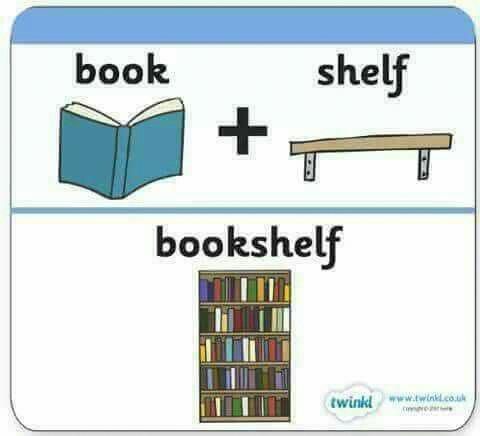 Would you like to know what it is the words? You will get to know them later.
Would you like to know what it is the words? You will get to know them later.
(Gym, head teacher)
- And one compound word sounded like one of lesson stages. What's this word?
(Handwriting - I write cleanly )
I X. Reflection.
- Complete suggestions: Slide 5
I found out ... (what is Difficult words).
In the lesson I studied ... (to write, compose, find complex words).
It was difficult for me…
· I liked…
· I would commend myself for…
- I think that after this lesson many of you can say…
Slide 6
(Read text from slide)
Today I searched, created,
Discovered new knowledge.
Learned to apply,
Now I can do tasks.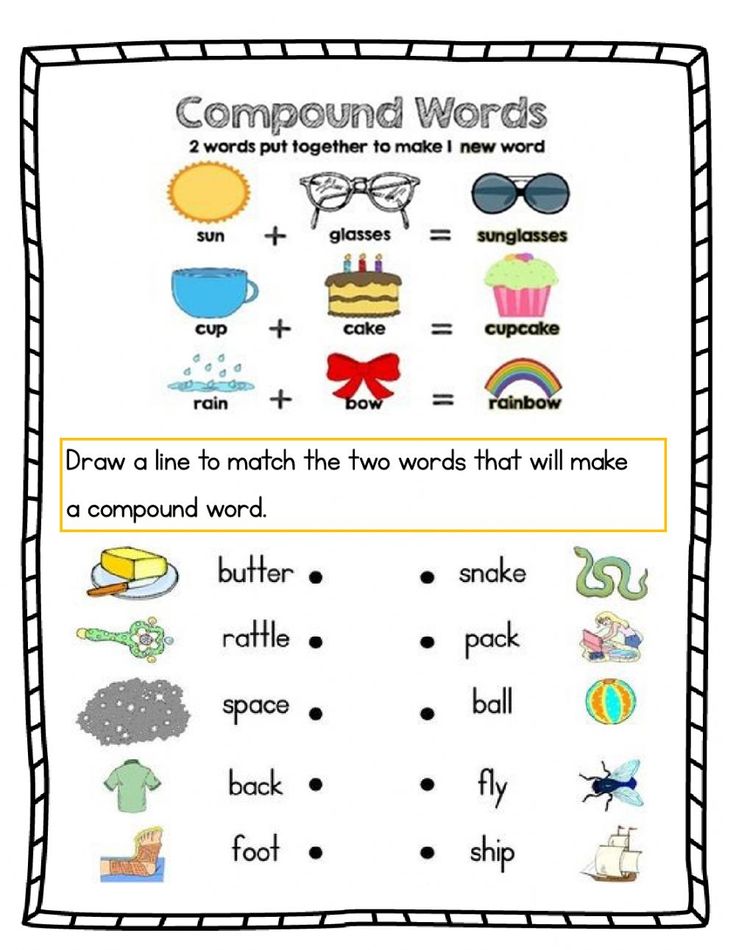
X. Homework.
The lesson is over,
Now summed up.
And now attention:
Homework…
2. If desired, compose and write down a short text (4 - 5 sentences) containing compound words.
Slide 7
22
Card
Words in which ____________________________ combined
_______________________________ are called compound words.
------------------------------------------------- -------------------------------------------------- --
Card
Words that have ____________________________ joined by
_______________________________ are called compound words.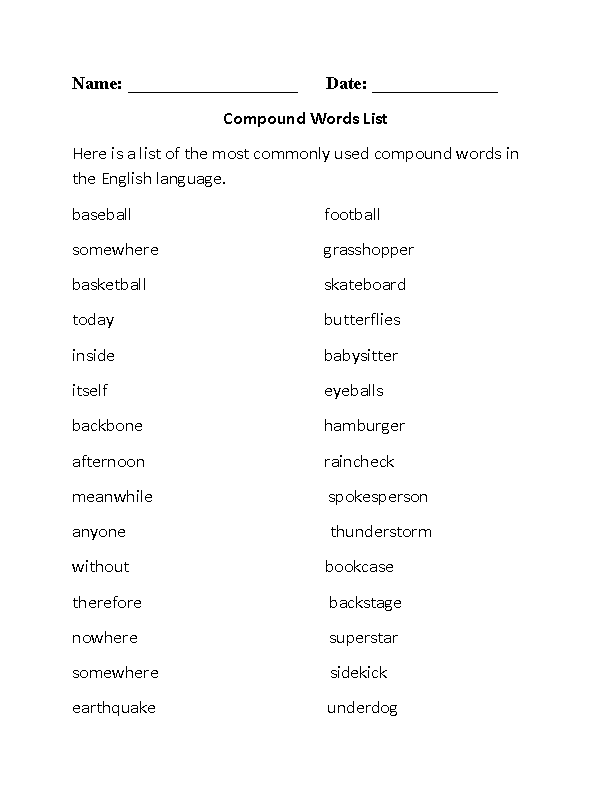
------------------------------------------------ -------------------------------------------------- --
Card
Words that have ____________________________ joined by
_______________________________ are called compound words.
------------------------------------------------- -------------------------------------------------- --
Card
Words with ____________________________ connected
_______________________________ are called compound words.
------------------------------------------------- -------------------------------------------------- --
Card
Words that have ____________________________ joined by
_______________________________ are called compound words.
------------------------------------------------- -------------------------------------------------- --
Card
Words that have ____________________________ combined with
_______________________________ are called compound words.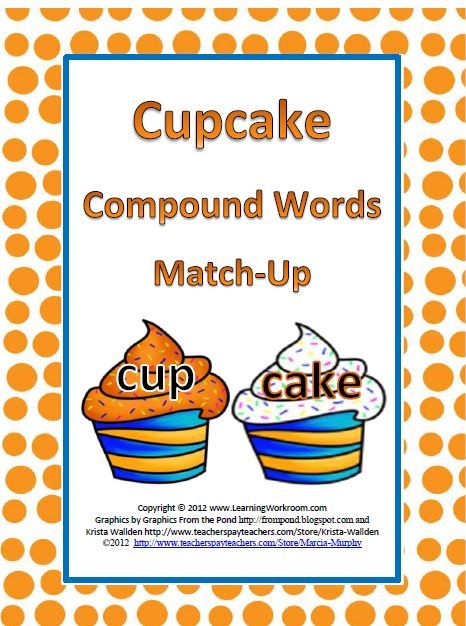
------------------------------------------------- -------------------------------------------------- --
Card
1. Underline in the sentence, the main and secondary members of the sentence, sign the parts of speech.
Under trees grow young mushrooms.
2. Pick up related words to the word night , highlight the root.
Night - ____________________________________________________________
------------------------------------------- -------------------------------------------------- ------- Card
1. Underline in the sentence, the main and secondary members of the sentence, sign the parts of speech.
Under trees grow young mushrooms.
2. Pick up related words to the word night , highlight the root.
Night - ____________________________________________________________
----------------------------------------------- -------------------------------------------------- --- Card
1.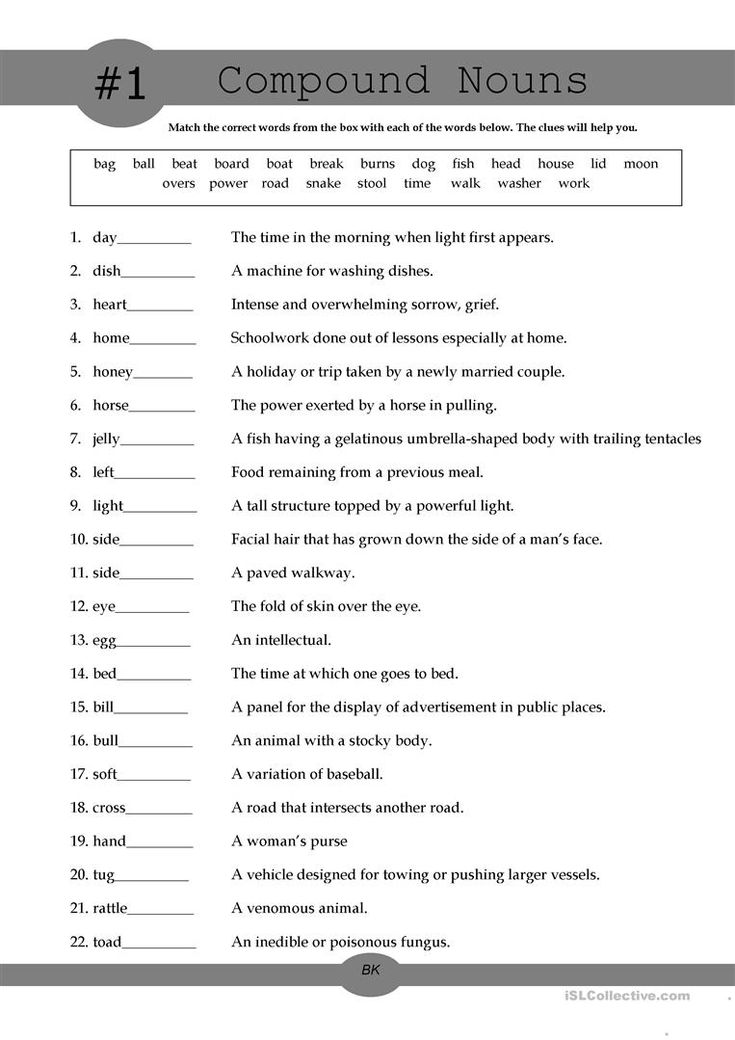 Underline in the sentence, the main and secondary members of the sentence, sign the parts of speech.
Underline in the sentence, the main and secondary members of the sentence, sign the parts of speech.
Under trees grow young mushrooms.
2. Pick up related words to the word night , highlight the root.
Night - ____________________________________________________________
----------------------------------------------- -------------------------------------------------- --- Card
1. Underline in the sentence, the main and secondary members of the sentence, sign the parts of speech.
Under trees grow young mushrooms.
2. Pick up related words to word night , highlight the root.
Night - ____________________________________________________________
Russian language lesson.
 Topic: "Compound words" Grade 3 | Primary school
Topic: "Compound words" Grade 3 | Primary school Author: Elvira Riferovna Gareeva
Organization: MBOU-Gymnasium Chekmagush village
Settlement: Republic of Bashkortostan, s. Chekmagush
Didactic goal : to create conditions for the formation of the concept of "compound words" and its introduction into the knowledge system.
Tasks: 1) introduce students to the formation of compound words;
2) develop the ability to find compound words among other words, develop mental operations, students' speech;
3) cultivate interest in the subject.
Lesson progress.
1. Organizational moment. Psychological mood.
Children sit down and close their eyes, listen to the teacher, and the last word of each phrase is said in unison.
U: In the lesson, your eyes are attentively watching and that's it ...
D: see.
W: Ears listen attentively and that's it...
D: hear.
U: Head well…
D: thinks.
- So, let's start the Russian lesson. What basic learning skills will help in the lesson? (ability to listen, hear, think)
U.- Write down the number, class work.
A minute of calligraphy.
U.- Show what letters are written?
D.- Showing the letters "o" and "e".
U.- What do these letters have in common?
J.- They represent vowel sounds.
U. – Which of these letters is special? Why?
D. - the letter "e", because it can denote two sounds {d} and {e} at the beginning of a word, after vowels and after ь and ъ signs.
W: Write down, keeping the pattern, continue to the end of the line.
2. Teacher: Let's start the first stage of the lesson - the orienting and motivational stage.
:- Guys, are you ready to make new discoveries?
Task 1.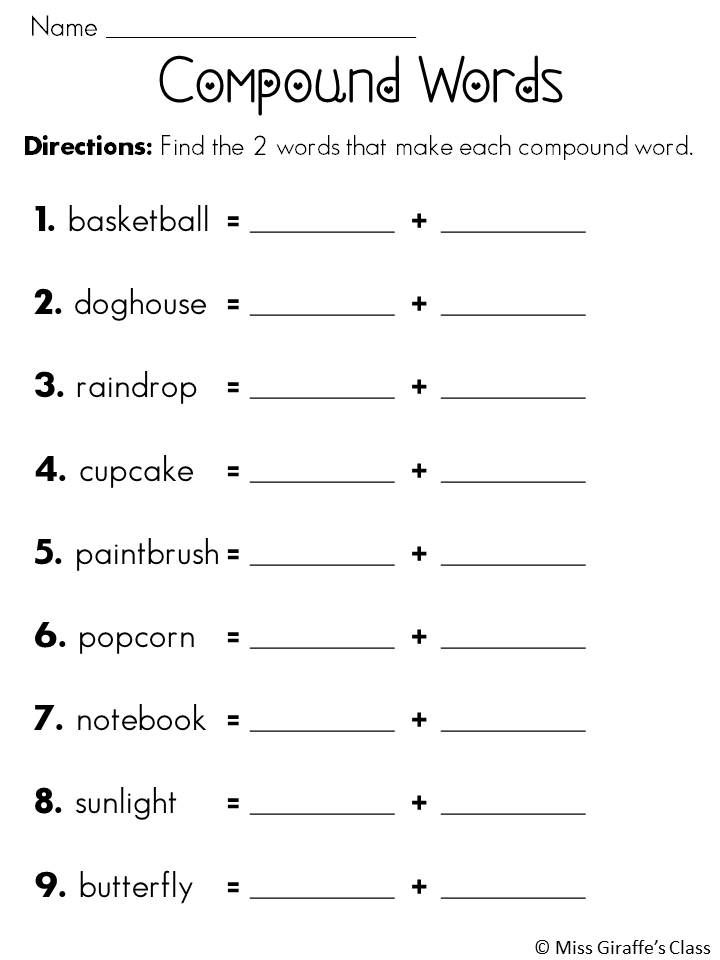 Read, suggest tasks for the text. We work in groups.
Read, suggest tasks for the text. We work in groups.
Winter. Fluffy snowflakes float in the air.
Snow covers the earth with a warm blanket. Snowstorms cover forest paths. And children are happy. They play snowballs, build snow forts.
…………………………………………………………………………………………………...
- 1 group answers.
Students:- Read expressively.
- Analyze sentences by parts of speech and sentence members.
- Find and write related words.
- Write down the text and parse the composition of related words.
Teacher: Any additions?
- Write down words with the same root and parse them according to their composition .
Teacher: Task 2. Write the same-root words in a notebook and sort them out by composition.
……………………………………………………………………………………………………..
TEACHER: Group 2 answers.
Student: Snowflakes, snow, snowballs, snowy
Teacher: Prove that these words have the same root? How were these words formed?
Teacher: Evaluate the work of the group. (For 2 tasks)
Teacher :- And how can new words be formed?
Student :- With attachment. - With prefix and suffix .
Teacher : - Do you know how?
Student :- Yes!
Teacher:-Task 3: form with the root snow -, snow- using prefixes and suffixes new words
……………………………………………………… ………………………………………………..
Teacher: Group 3 answers.
Name the words , formed with the suffix ( snow maiden, snow maiden, snow, snowman, snowball, bullfinch).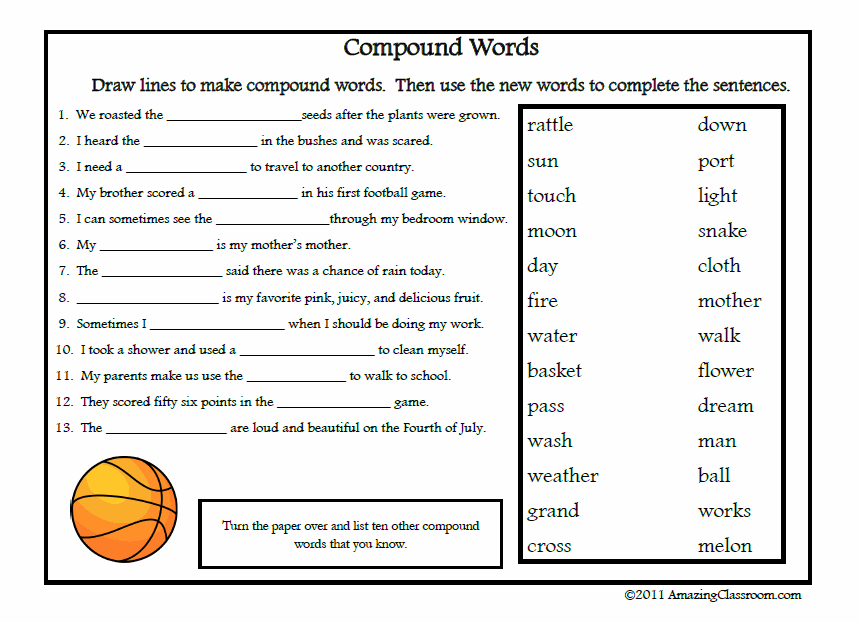
- with the help of a prefix and a suffix ( snowdrop, snowy, snowy, snowless).
Teacher: Assess the group work.
Teacher : - Do you think there are other ways of forming words?
-Do you want to know?
-Why do you need to know this?
Teacher: Task 4: Read, divide the words into groups. Consider several options. Birch, snowdrop, snowball, gait, escape, forest-steppe, transition.
Uch.- Masculine and feminine nouns.
- Nouns with "a" and zero endings.
- Essences with and without a prefix.
Teacher: Task 5. Divide the words into groups according to their way of formation
birch shoot snowdrop
snowball transition walk
Pupils – And we have one word that didn’t get anywhere. And so do we.
U.- Which word was superfluous? Why?
D. This is the word forest-steppe, it has two roots.
W: What do you think these words could be called? (children's assumptions)
U.- Indeed, in Russian there are words that have two or more roots. Such words are called compound.
Targeting.
U.- Who can name the topic of the lesson?
D. - The topic of the lesson is "Compound words".
U.- What will we learn at the lesson?
D.- We will learn to find difficult words, write them correctly, get acquainted with the rule.
3 . Stage 2 of the lesson - OPERATIONAL-PERFORMING STAGE.
Teacher: Task 6. Explore the words and try to answer the question, how are compound words formed?
| Write down the words that helped you understand the meaning of the word. |
|
| Select stem and ending |
|
| Draw a conclusion: how was the compound word formed? |
|
Ice drift, locomotive, aircraft, samovar, forest-steppe.
CONCLUSION
U.- What letter connected the two bases?
D.- The letter “o” connected the two stems.
U.- Who has already guessed the name of this vowel?
D.- This is a connecting vowel.
U.- What is the connecting vowel for?
D.- To connect two bases.
W: Where can we test our assumptions? Rule work.
R. - Read the rule on page 92.
- What else did you learn from the rule?
D.- We found out that there is also a connecting letter, the letter “e”.
U.- How are compound words formed?
D.- Compound words are formed by adding two bases.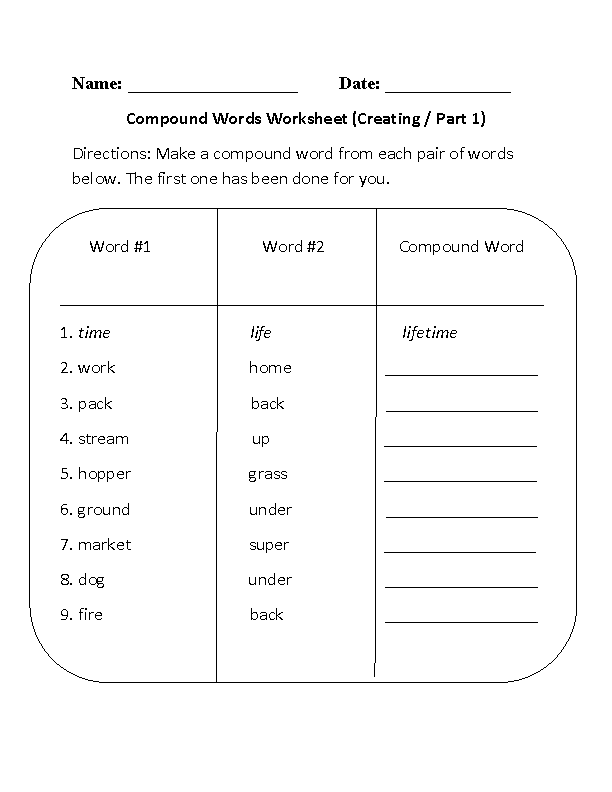
U.- What letters connect stems in compound words?
D.- These are the letters "o" and "e".
CHORAL SPEAKING, TO EACH OTHER, TO YOURSELF.
Evaluate group work.
Exercise for the eyes (presentation)
Primary fastening.
Task 5 Form and write down complex words in your notebook, emphasizing the connecting vowel and analyzing the words by composition. Try to draw a diagram of complex words.
1 group Garden, led Leaf, fall
2 group Heat, walk Steel, cook
3 group Forest, chop Book, love
4 group Water, fall Dust, suck
5 group Hay, cut down Fish, catch
CHECK
Teacher: Assess the group work.
- Write complex words in a notebook, sort them out by composition.
Autumn leaf fall has begun.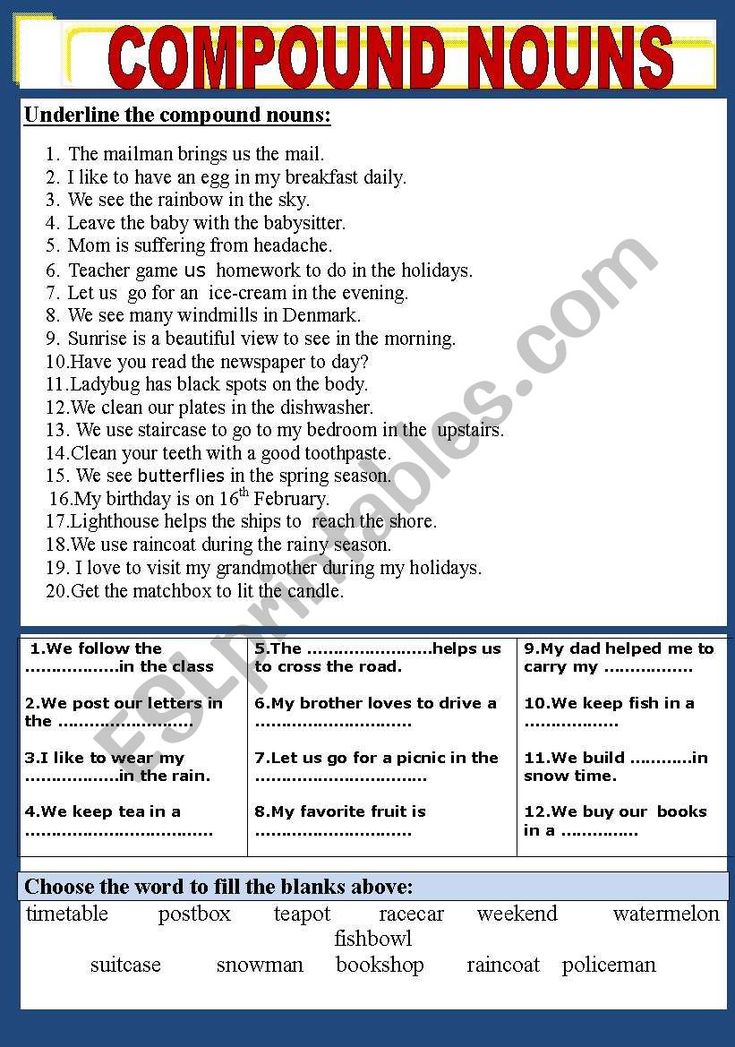 The beekeeper put the hives in order. Haymaking was late because of the rain. A powerful icebreaker crushed ice floes. The children will remember the trip on the steamer for a long time. The fire extinguisher sprayed out a stream of foam.
The beekeeper put the hives in order. Haymaking was late because of the rain. A powerful icebreaker crushed ice floes. The children will remember the trip on the steamer for a long time. The fire extinguisher sprayed out a stream of foam.
5. REFLEXIVE - EVALUATION STAGE. (Reflection is the ability acquired by consciousness to focus on oneself, to master oneself as an object ..., the ability not only to know, but to know what one knows.)
Conducted based on tables.
- Choose an answer and justify it.
| What did you learn at the lesson? desired … interesting … useful …
|
| Today at the lesson learned … understood … it was interesting … it was difficult … |
| My work: satisfied because … not entirely satisfied because… not happy because … |

